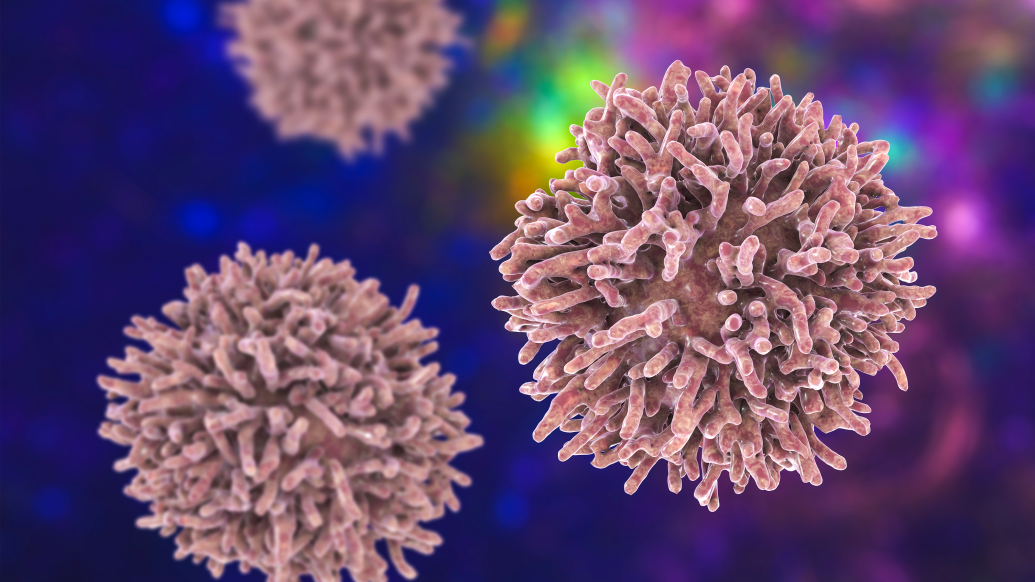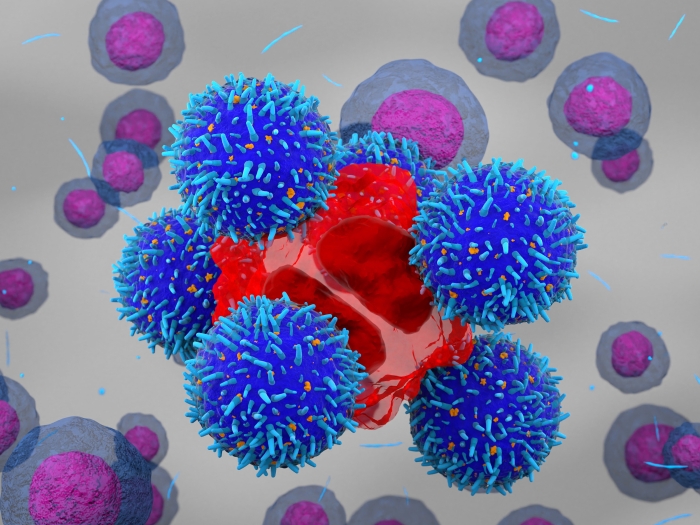From possible overdiagnosis to new therapies and health equity concerns, experts assess the current state of thyroid cancer care
5:00 AM
Author |

After years in the shadow of more common cancers, there’s new light for patients with thyroid cancer.
“It’s been a transformational time for thyroid cancer,” said Megan R. Haymart, M.D., Nancy Wigginton Endocrinology Research Professor of Thyroid Cancer at Michigan Medicine.
Increased use of neck ultrasounds has driven up the number of people globally who are diagnosed with thyroid cancer, which has brought new attention to the disease. It’s now the ninth most common cancer worldwide.
The increased diagnoses have led to questions about overtreatment – do small nodules spotted via ultrasound screening need treatment? And should we be screening for this cancer at all?
Once diagnosed, doctors are now asking which patients need surgery, and among those who do, can it be less than total removal of the thyroid?
And for those patients with advanced thyroid cancer – which used to have no treatment options – there are now multiple therapies helping to extend life.
Also of note: wide disparities in who is being diagnosed and access to quality thyroid cancer care. The changing demographics of the disease also raise questions about appropriate treatment. Women account for three-quarters of those diagnosed and the average age is early 50s – younger than most other cancer types.
Haymart was invited to assemble an international team of authors to take on one of the Lancet's Clinical Practice topics. The team started with a seminar paper on thyroid cancer and will continue to alert the journal to practice-changing research over the next four years.
The seminar paper assesses recent literature and makes clinical recommendations for diagnosis, treatment management, addressing health disparities, the need to improve access to quality thyroid cancer care and other challenges.
“One of the biggest challenges today is the lack of funding for thyroid cancer research. It is only through high-quality research that we can improve the care of our patients,” Haymart said.
Here, she discusses recent advances in thyroid cancer and what’s needed moving forward.
A dominant theme in the research is less invasive and less aggressive treatment. But that has not been fully embraced in clinical practice. What are the challenges?
Haymart: Even though less intensive treatment of thyroid cancer is associated with fewer risks, such as less complications from surgery, the uptake has been slow. Part of the reason is that when you perform less intensive treatment, the optimal long-term follow up is unclear. We need more research to understand optimal surveillance for recurrence in patients who undergo less intensive treatment and more data to support when to stop monitoring. With better evidence on optimal long-term surveillance, there should be wider acceptance of less intensive treatment.
Is there a model in other cancers or other diseases for less intensive treatment?
Haymart: Some have compared thyroid cancer to prostate cancer in that both cancers have a large number of patients with low-risk disease and in some instances, treatment risks may outweigh benefits.
However, a major difference is that prostate cancer occurs in older men, whereas thyroid cancer is the most common cancer in young adults and 75% of patients are female. This difference in patient demographics does impact care. If a 75-year-old undergoes less intensive management and is followed for disease progression for 10 years, that may be acceptable. But if a 35-year-old patient undergoes less intensive treatment, is 10 years of follow-up for progression adequate?
There will likely be better uptake of less intensive treatment strategies once longer-term data on risks and benefits is available. There is still a need for more thyroid cancer research.
You highlight eight new therapies that have emerged for advanced thyroid cancer after years of literally no options. What allowed that kind of development?
Haymart: The past decade has been an exciting time in the treatment of thyroid cancer. Thyroid cancer has commonly been called an “orphan” cancer. It is a cancer that is primarily treated by endocrinologists, not oncologists. It is a cancer that affects women and young adults, whereas most cancers are more common in men and older adults. It is a cancer that for most, but not all, the prognosis is good.
As a result, for these reasons, thyroid cancer has historically been understudied. But as new treatment options became available for other cancers, the need of patients with advanced thyroid cancer has been recognized.
You also point out a number of health disparities, from availability of screening to access to care. How do we begin to address these issues?
Haymart: As new treatment options become available, it is important that they are available for all. Strategies for increasing access include providing affordable health care, increasing access to high-volume surgeons, providing language interpreters when needed, and increasing access to targeted drug therapy. It is also important to increase the diversity of the physician workforce and of patients enrolled in clinical trials, and to engage communities in research.
Additional authors: Debbie W. Chen, Brian H.H. Lang, Donald S.A. McLeod, Kate Newbold.
Paper cited: “Seminar: Thyroid Cancer,” The Lancet. DOI: 10.1016/S0140-6736(23)00020-X

Explore a variety of health care news & stories by visiting the Health Lab home page for more articles.

Department of Communication at Michigan Medicine
Want top health & research news weekly? Sign up for Health Lab’s newsletters today!





